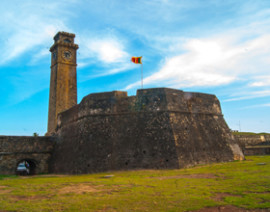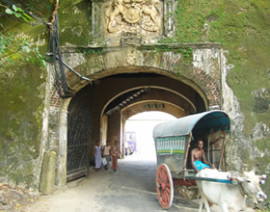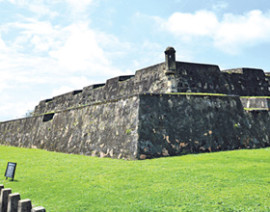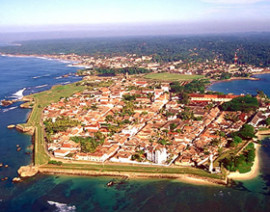Archaeological Tour of Sri Lanka
10 Nights /11 days
Day 1
Upon arrival we are met and transferred to colonial Galle Face Hotel, Colombo on the Airport expressway. The Hotel was built in mid 19th century and is one of the main landmarks of the City of Colombo.
We engage in a city tour of Colombo giving prominence to a visit to the Colombo Museum, which will be the initial introduction to the unparallel cultural heritage of Sri Lanka.
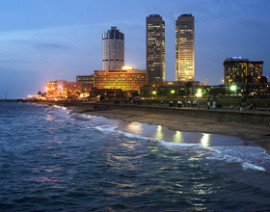
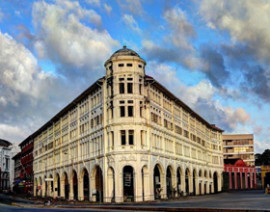
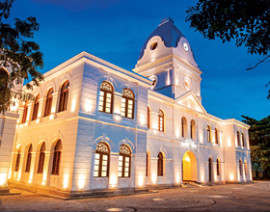
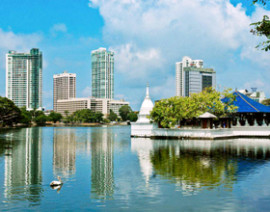
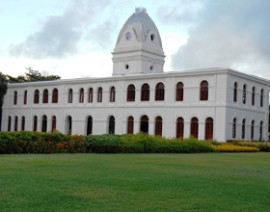
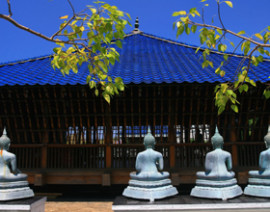
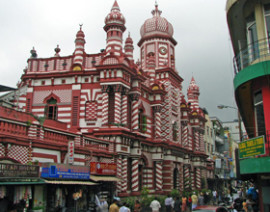
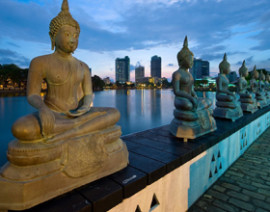
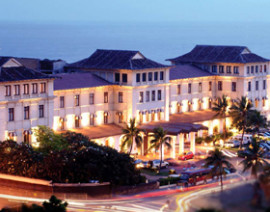
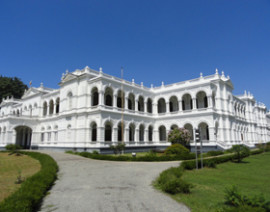
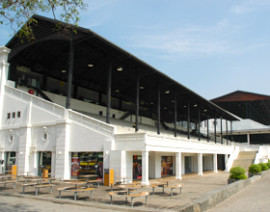
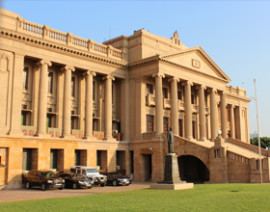
Colombo
Evening explore the city of Colombo visiting the lovely Galle Face Green; the great British Built lawn overlooking the waterfront of the Indian Ocean, Classic old parliament and the present sky-line of the city integrating into one another so incredibly.
It is a city where great colonial era buildings are still left intact and are immaculately maintained to stand side by side with the modern in the most elegant manner. This outlook in fact is not seen so prominently in any other city in Asia. It no doubt speaks volumes of the glorious past attached to the city of Colombo from the 15th century onwards when the ownership of the city changed hands from the King to the Portuguese and then to the Dutch and to the English later, until the Island became a sovereign state once again in 1948. All Europeans left their own footprints in the city and more importantly their values among its people that made the Islanders a great Nation and their capital so pleasingly special. You will get to visit the 17th century Dutch Wolfendhal church, The Museum, the Town Hall and The Victoria Park built by the British, a lovely temple of Buddha in a lake setting and a colorful Hindu shrine. The latest attraction is the tastefully salvaged 400 year old Dutch Hospital in Colombo Fort which is now renovated to its former glory ever so wonderfully. You will find lively pubs, ritzy restaurants offering choice cuisines, coffee and tea houses, up-market spas and even ample shopping, all within the unparallel charm of the vast hospital complex. The area with classic court yards, maze of alluring terraces with seating resembles European thoroughfares of the colonial times. The latest addition to the city is the newly renovated colonial race course which is now an international class rugby grounds where the mammoth grand stand feature great up-market shopping with amazing eating-houses. It is no doubt that this is the oldest colonial grand stand and pavilion in Asia.
Latest Independence Arcade Mall – one of many salvaged colonial buildings
Overnight at The Galle Face Hotel in Colombo.
Day 2
We leave on the Airport express and then fall-on to the Northern route in order to reach our destination Anuradhapura.
Upon passing the bustling Chilaw, the landscape becomes arid and remote. The built-up road side will presently give way to lush coconut plantations and prawn rich sea-side lagoons. When you reach the vast Puttlam lagoon, the vegetation dwindles to mere swamps. Predominantly a Muslim swathe, Puttlam is famous for salt making industry, wind mills and wild asses. The road curves inland from here and somnolent dry zone landscape takes over soon and remains so until you reach the sacred city of Anuradhapura. Some forests stretches are notably infested with wild elephants and as you close on Anuradhapura you’ll come across little faming hamlets and quiescent townships.
Upon arrival in Anuradhapura we check into colonial Tissa Wewa Grand hotel, found in the sacred city itself.
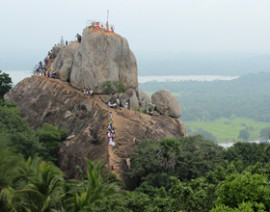
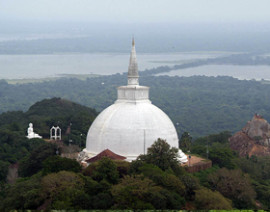
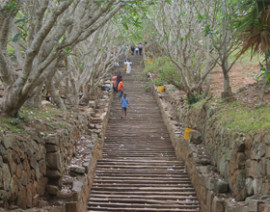
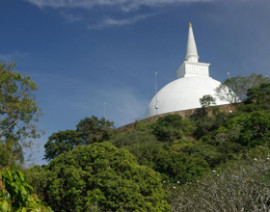
Mihintale rock temple
We visit the Mihintale rock temple situated 8 miles away on a comprehensive tour. Ascend the rock on the famous stone steps cut into the rock by the ancient Kings ever so daintily, in the comfort of the fine shade of frangipani trees grown along the path. The scent of the flowers adds so much serenity to the much revered sacred site. Once you reach the summit you could visit the Stupa built to identify the exact location where the doctrine of Buddiism was first introduced to the Island nation by the Indian prince turned monk Arahat Mahinda in 3 BC. After sightseeing of other ruins, including the rock cave in which the noble monk slept while he was residing there, proceed to Kaludiya Pond complex at dusk. A little path from the main road will lead you to this stunning landscape of a little lake, full of blooming water lilies, found in the back drop of some quaint stone ruins amidst an absorbing rock formation; thought to be part of an ancient monastery complex. World renowned Sri Lankan architect Mr Geoffrey Bawa is said to have used this breath-taking true Sri Lankan landscape for many of his creations.
Overnight at Tissa Wewa Grand.
Day 3
We cover the Anuradhapura sacred city on a full-day tour.
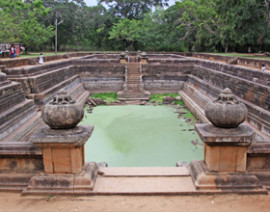
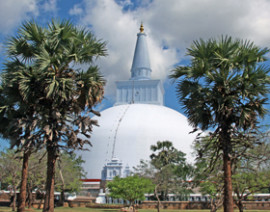
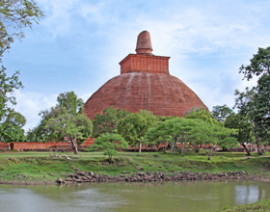
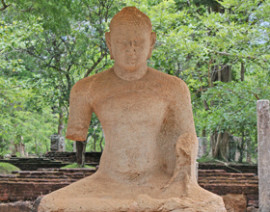
Anuradhapura
Anuradhapura is the first recorded capital of Sri Lanka from 3BC to 12AD. Visit the monuments that speak volumes of a great civilization that flourished in this land before most in the rest of the world.
Visit the Ruwanweli Maha Thupa and the Sri Maha Bodhi tree complex perhaps the oldest recorded tree in the world and one of the most important places of worship for Buddhists. You could also walk from Thuparama; the first stupa ever to be built in the Island in 3BC, to the Bodhi tree on a paved path passing the Maha Thupa of 2BC on the right and what is left of the majestic Brazen Palace of the same era on the left; once said to have had seven stories with a golden roof to house thousands of meditating monks.
What you see now is the repair-work of the famous King Parakramabahu who reigned from the second capital Polonnaruwa in the 12th century who visited the sacred sites of Anuradhapura left by his predeceases, having forced to vacate the great city that was set ablaze by the invaders from South India in the 11th century. Also visit the giant Ath Pokuna(elephant pond); a bathing pool meant for the monks that is five times larger than an Olympic size pool and the classic twin ponds also meant for the usage of the monks. Then, you’ll visit the remains of the rock-work of gigantic monastery complexes of Abhyagiriya Stupa dating back to the 1st century and Jethawana Stupa of the 4th century; restoration of both now completed to its absolute magnificence. These classic stone works and amazing rock carvings are found scattered over acres and acres of a well maintained forest garden in an absolute tranquil setting. The priceless artifacts include the gallant guard stone and the elegant moonstone. A hike through the ruins is recommended to absorb the real feeling of a highly advanced civilization that flourished two thousand years ago. In addition, visit the captivating Samadhi Buddha statue, subject for many a lyric writer and the ancient temple at Isurumuniya from where you could do yet another stroll along the scenic tank bund to the Royal Prince’s pleasure gardens “Ranmasu Uyana” of 2 BC. It will be an unforgettable experience. Eminent Archaeologists say that Anuradhapura with such large pagodas that are perhaps second only to a few pyramids in size could have been bigger than the greater Rome in its heyday! We stay at the Tissa Wewa Grand.
Day 4
We travel from Anuradhapura to Aukana, then do sightseeing at Rasvehera and leave for Yapahuwa Fortress. Afterwards, we travel a short distance to see Arankele ruins and then leave for Habarana to stay the first of the 4 nights at Cinnamon Lodge, Habarana. All traveling would be within a triangle.
Aukana Statue is found after about an hour’s drive away from Anuradhapura. The statue, carved from a sheer granite rock has an immaculate finish to it. It is forty feet in height and said to have been carved in the 7th or the 8th century. It bears a resemblance to standing Buddha in a preaching pose and is considered as an absolute master- piece of pre-medieval rock carvings.
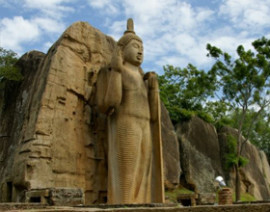
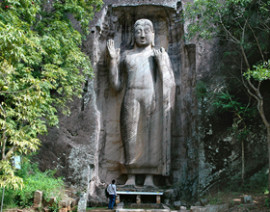
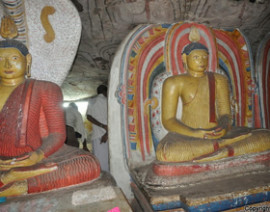
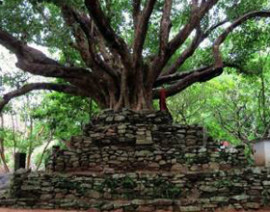
Twin Statues At Aukana And Rasvehera
Statues are found about an hour’s drive away from Aukana. Rasvehera is a very remote temple built on a hillock in elephant infested jungles and Aukana statue, done later, is of a much better finish to it, if not perfect. Both statues are forty feet in height and said to have been carved in the 7th or the 8th century. Whilst both bear a resemblance to standing Buddha in preaching pose, Rasvehera statue is found still embedded into the rock. Aukana is separated from the rock and both are considered as master- pieces of ancient rock-carving. In Rasvehera there are over forty caves where monks may have meditated in the King’s time though most are swallowed by the impenetrable jungle now. Yet, the main cave has some great sculpture work and rock-drawings dating back to the Anuradhapura era, found touched by the kings of Kandy much later perhaps for a better finish.
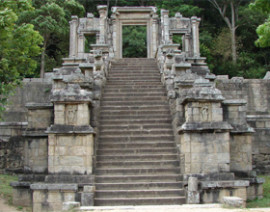
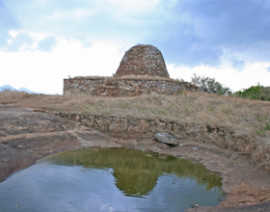
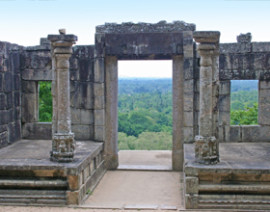
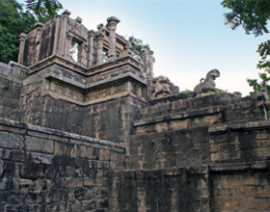
Yapahuwa
Upon arrival at the foothill commence sightseeing. The 13th century site that once was the Kingdom is famous for its classic stone stairway of a considerable height and the notable carving of the statues of lions found in a lobby midway. It is considered as a masterpiece of a rock carving. Rest of the climb is there for the adventurous up to the summit from where one could enjoy a great view of the dry zone wilderness of Sri Lanka. The vista; a fusion of green merging ever so wonderfully with the speckles blue sky like at the Sigiriya is found dotted with dry zone
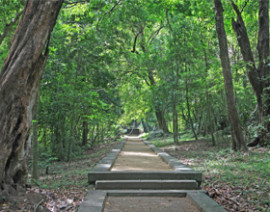
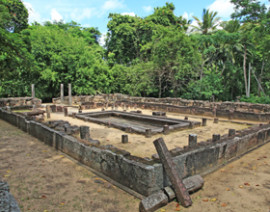
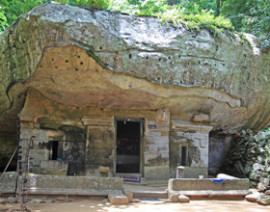
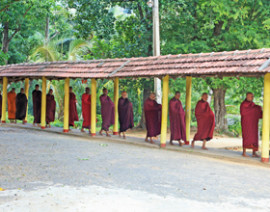
Arankele ruins
This is a pre-historic monastery complex but made use by monks till the 15th century as it seems. There are caves, paved meditating paths and stone foundations of many other structures that may have served the purpose in its heyday.
Afterwards, we leave on a further 2 hour drive to our base leaving a long but eventful day behind.
Overnight at Cinnamon Lodge resort.
Day 5
This day we cover the ruins of Medirigiriya quadrangle temple and the Polonnaruwa ruined city.
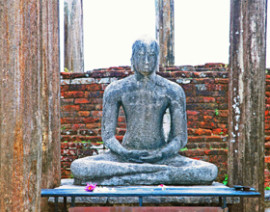
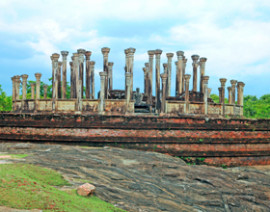
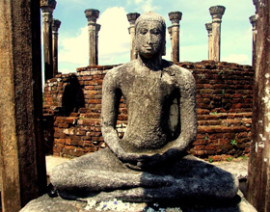
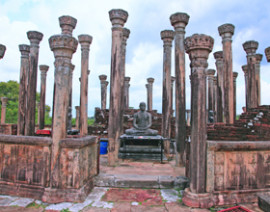
Medirigiriya Quadrangle Temple
This is just a 1.5 hour drive from Habarana and the route follows a lovely irrigation channel all along through one of the main rice bowls in the Island, Hingurakgoda. Though the fields may feature an abandoned look in the dry months from April to October the vastness of the landscape stretching as far as the horizon would allow you to visualize its splendor at harvest. The quadrangle at Medirigiriya is said to have been done during the last years of the Anuradhapura reign by the Agbo dynasty. The reason for such a complicated structure to sprout from earth in middle of nowhere remains an unsolved mystery to many still. It is believed that a monastery complex was established with the structure as ample evidence of hostels, hospitals etc, found scattered around the site suggest. The majestic structure built on a mound of earth is believed to be the best of its kind found anywhere in Sri Lanka and has been used profusely to market tourism in Sri Lanka since the colonial times. In the fifties, when the surrounding areas of Medirigiriya were covered with rank forests, leopards were known to roam among the ruins!
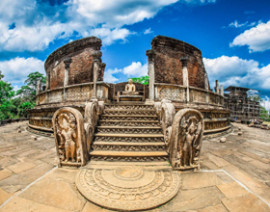
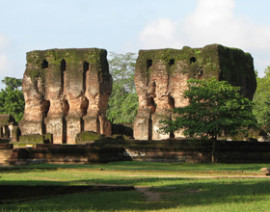
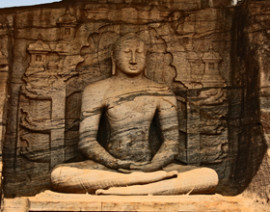
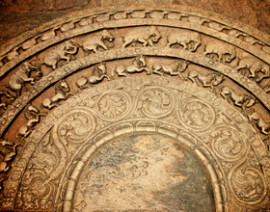
Polonnaruwa
Visit the ruined medieval city of the 12th century; a world heritage site and the second capital of Sri Lanka and commence sight- seeing. The first section that is considered the main area; a maze of ruins, starts from the King’s palace, his court and the bathing complex and then extends all the way to the Thuparama, Lord Shiva Shrine, quadrangle complex, gigantic rock inscription, seven storey structure and the tooth relic chambers. They speak volumes of the South Indian influence. After sight- seeing, commence a long but very interesting hike from that area to the Alahana pirivena(monastery complex) site during which time you can visit the Lankatilleke image house, giant Rankot pagoda and dainty Kiri pagoda. En route you could deviate looking at the sign boards to cover interesting Pabulu Vehera, Menik Vehera and Shive Shrine no 2; all interesting little pieces of art connecting one to another. After wards, leave for the Galvihara statues; probably the best piece of rock carving found in Sri Lanka that has an immaculate, outstanding finish to it. Then it’s your turn to visit the Lotus pond; yet another masterpiece of a rock carving and Thivanka image house where original 12th century paintings can be viewed. A visit to the colonial rest house built picturesquely on the bund of the lake will allow you to relax and enjoy refreshments. It is where the Queen of England lunched twice and is now a great boutique hotel.
Thereafter, visit the second section situated right behind the rest house and by the lake; that is the area associated with King Nissanka’s reign in the 14th century. You could cover the remains of his palace, court with the famous carving of the lion’s statue, his little summer house built in an island of the lake and the charming bathing pond complex; all timeless medieval rock-work. Afterwards proceed to the last section; that is the King’s statue considered to be yet another important rock carving and the library (potgul vehera), all found built virtually on the bund of the great lake the King built to irrigate his Kingdom. You’ll find two kinds of monkeys; grey languor and torque, roaming freely among the ruins, at times in large troops; a glaring subject for Smithsonian to cover in one of their classics.
Overnight at Cinnamon Lodge resort.
Day 6
On this day we cover the Sigiriya Rock Fortress and Pidurangala Rock caves at leisure.
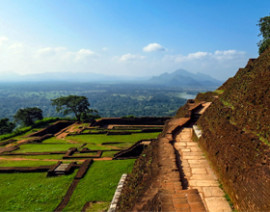
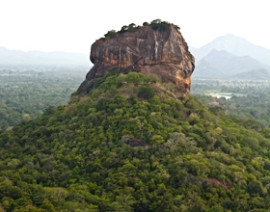
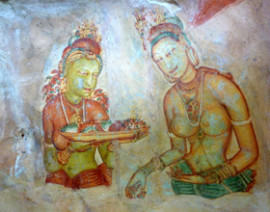
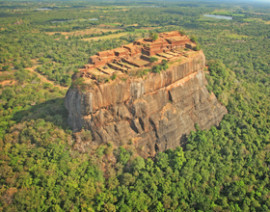
Sigiriya
The spectacular rock fortress of Sigiriya belongs to the 5th century. It’s yet another world heritage site. Different theories of its creation are published by eminent archaeologists. Some say that once a Kingdom of a King was later used by monks as a monastery complex.
Whichever the theory, the 640 foot gigantic rock striking into the clouds from the arid flat plains by itself presents an inscrutable mystery to most. As you approach the great fortress, firstly you’ll get to brave the deep moat built right around the rock that had been infested with man-eating crocodiles during the King’s time. The pleasure gardens of the King comes next in where during the rainy season, water fountains still emits a substantial spray most astonishingly. After you pass the classic rock garden and walk through stunning boulders that may have held many impressive structures together as guard points in ancient times, you’ll proceed towards the all important cavity in the rock located halfway up where the world famous frescoes of the beautiful maidens are found, drawn and painted on the very rock-wall in natural colors so miraculously. This indeed is a masterpiece that is priceless.
At certain times of the year you could watch nesting peregrine falcons in some of the other cavities on the rock-wall.
Afterwards, proceed to the colossal Lions paw made of bricks, climbing further along the incredible mirror wall on which the yesteryear admirers of the paintings wrote poetic verses delineating what they saw in quaint, early Sinhalese characters, perhaps readable only to archaeologists.
A further adventurous climb from the Lion’s paw will take you to the flat summit of the rock to enjoy one of the most beautiful views in the Island, that of the ever-green tree canopy of the Island’s dry zone that is seen dotted with ancient man-made lakes every now and then. The immediate area surrounding the rock is a declared sanctuary in where wild elephants and other game still roam. On the peak you will also come across the King’s court, remains of his living quarters and his pool complex, presently opening out to the heavens in the absence of any shelter! The mystique fortress that is sadly dead now leaves its wonderful legacy for you to visualize its heyday with so much ease.
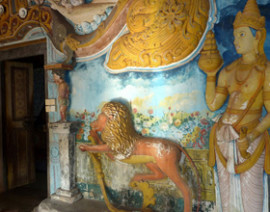
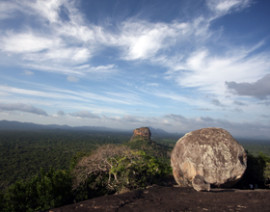
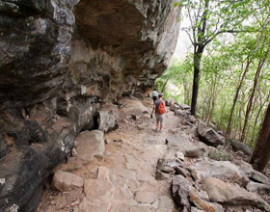
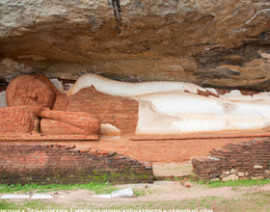
Pidurangala Rock
Before the sun comes up, climb the Pidurangala rock where there is a living hermitage to enjoy one of the most scenic views in which the Sigiriya rock, rising from the green wilderness at a rather unusual tangent, feature very prominently. The monastery complex dates back to the 1st century and you will get to meet some meditating monks at their breakfast. Overnight at Cinnamon Lodge Resort.
Day 7
On this day we cover the Ritigala forest ruins and the Dambulla cave temple.
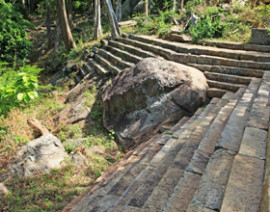
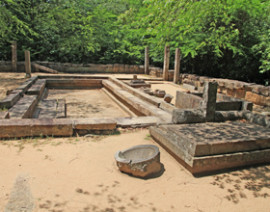
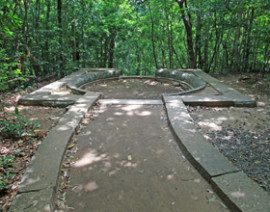
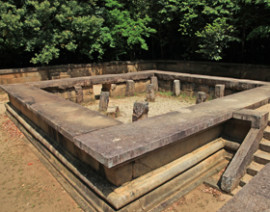
Ritigala
This is a mountain range, in fact seven peaks, shrouded by thick virgin forests where you’ll find mysterious ruins of a civilization that flourished in the island from 2BC to 8AD hidden amidst the evergreen foliage. Archeologists believe that it may have been a vast monastery complex. An alluring stone path, the only one of its kind found in the Island, will take you from the foothill to the area where the inexplicable ruins are located on much higher ground. The unearthed monuments so far are spread over an area of over hundred acres of forests. All structures of Ritigala that withstood all these centuries are made of granite rock though without much carving in comparison to most in the region. The forest is untouched and is home for elephant, leopard and sloth bear though it is difficult to see them during the day time. But very rare forest birds are found in abundance. The probing hike under the great forest canopy with myriad of eerie sounds o f the jungle to fill your ears will thrill you to the limit.
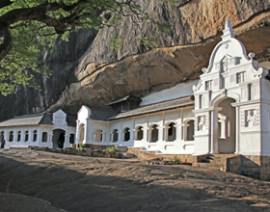
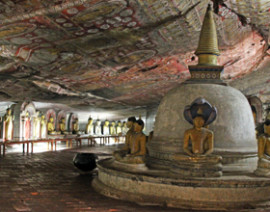
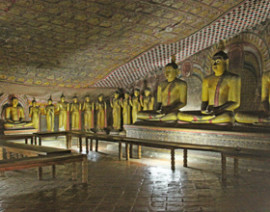
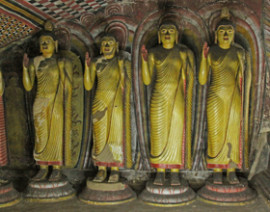
Dambulla
Dambulla cave temple is situated close by; yet another world heritage site where in five pre historic caves you’ll find not only fantastic colorful drawings, mostly of Buddha and events of his life painted on the rock-wall but some outstanding sculpture work as well. Some do date back to the distant 1st century. The paintings are perhaps second only to the ones at Ajantha and Ellora in Aurangabad in India. Eminent painters who visit the caves as an essential part of their itinerary are often mesmerized by the creation of such rich colors, so soothing to the eye, so early in civilization, and wonder at the mystery of the treasured paintings to survive all these centuries!
Day 8
We leave for Kandy. En route we cover the Nalanda image house and a spice garden.
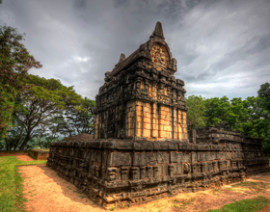
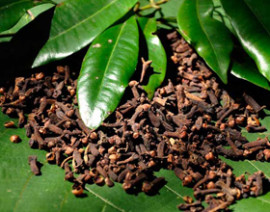
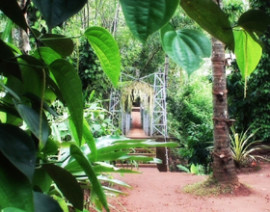
Spice Garden
Sri Lanka had been famous for its spices since the medieval times and is considered as one of the main reasons for the Europeans to conquer the Island and for the Arabs to trade upon from the 14th century onwards. The most interesting feature would be the opportunity you’ll get to identify the real plants of spices you are so familiar with in your day to day life. A qualified guide will do a conducted tour of the garden and a presentation of its products. Upon arrival in Kandy we check into Cinnamon Citadel resort.
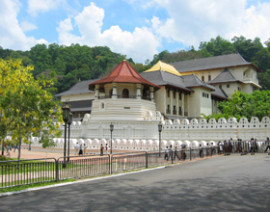
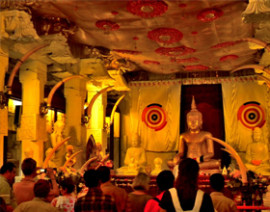
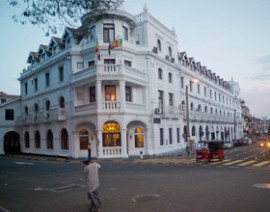
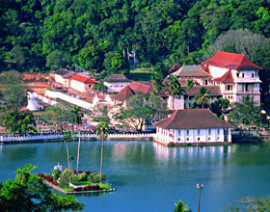
Kandy
During your stay you could explore the ever so quaint Kandy; the last Kingdom, visiting the temple of the sacred tooth relic; the most important place of worship for Buddhists world-over at which place you’ll get to participate in a colorful ceremony to the tune of the Eastern tom toms. It will be full of culture and timeless ritual. At 0530 PM you will be in an audience to watch the traditional cultural dance, actually a symbolic glimpse at 2500 years of heritage!
You’ll also visit the upper lake area to catch a bird’s view of this fascinating lake city and the great temple cluster that is declared as a world heritage site now. A visit to the botanical gardens will thrill you for it is the only one of its kind in this part of the world. Being the pleasure gardens of the Queen once and found hugging a shaded river, you could stroll under fine the shadow of great trees for hours passing manicured lawns and lovely flowering shrubs in wooded groves. A visit to the famous orchid house is a must for orchid lovers. Evening, one could walk around the Kandy Lake and along its paved paths with the great Temple in the back-drop enjoying the cool breeze flowing freely from the distant hills. Kandy being the last Kingdom offer valuable souvenirs in handicraft and gems. Sri Lanka is the only country in the world in which world famous blue sapphires are found in its pure original form.
Day 9
We explore interior Kandy on this visiting temples and shrines that belong to the Kandy era of Sri Lanka’s history. They are Degaldoruwa, Gadaladeniya, Lankatilleke, Gangarama and Embekke shrine. The temples date back from 11th century to the 16th and are in fine preservation as they are living temples. Overnight at Cinnamon Citadel resort.
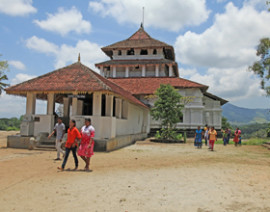
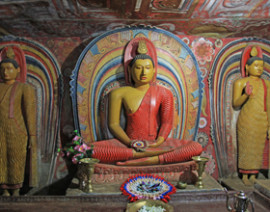
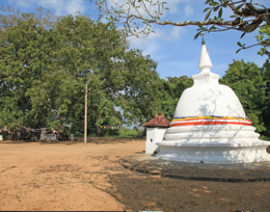
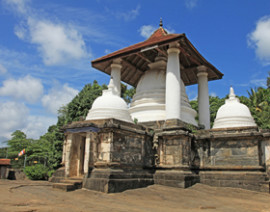
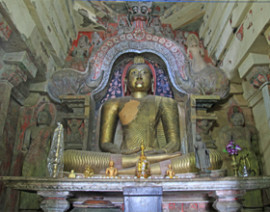
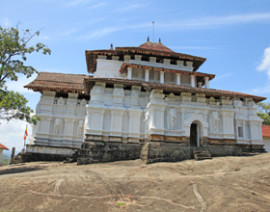
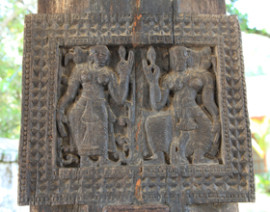
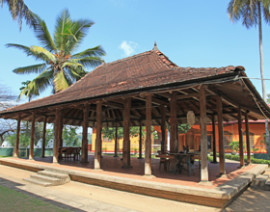
Day 10
We travel to Galle via Kurunegala at leisure. En route we stop at the 14th century temple Ridee Viharaya. It’s a cave temple famous for ancient paintings, which are very well preserved as it is a living temple. Traveling on expressway we reach Galle and check into Fort Printers Hotel, found inside the Fort. In the evening we cover the Fort comprehensively.
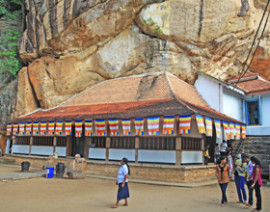
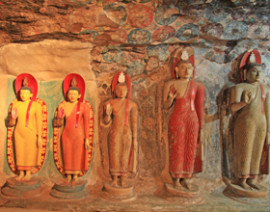
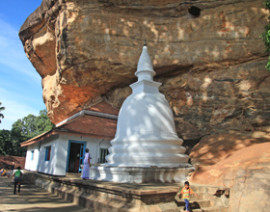
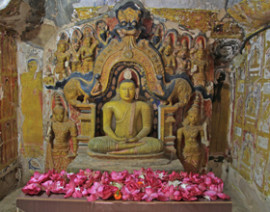
Galle
At Galle you’ll find the 17th century Dutch Fort that is now declared as a World Heritage Site. In a vast isthmus protected by a massive rock wall built around it, you would come across grand churches, great Dutch buildings, ancient garrisons and cannon positions, maze of court yards, paved assembling positions all well connected by cobblestone streets and then a lovely maritime museum, everything restored to its former glory after the devastating Tsunami in 2004. Actually most of it was generously funded by the Dutch Government. The British built a classic light house in 1848 and you could saunter from the light house to the entrance of the Fort along a paved path virtually on the towering Fort-wall enjoying the view of the rocky sea beach and its aquamarine waters on one side and the great Fort on the other. There is the famous Amangalle resort; an exclusive up market property built during the Dutch times, famous for its cozy yesteryear ambiance. It was formally known as the NOH and you could visit the colonial hotel for a cup of tea or for lunch if you wish to go back to the 18th century world that would surely likely to unfold in front of you at the charming Amangalla. Overnight at Fort Printers Hotel. Next day morning we leave for the Airport on the expressway in time for the onward flight.
